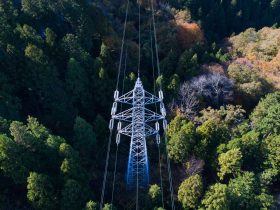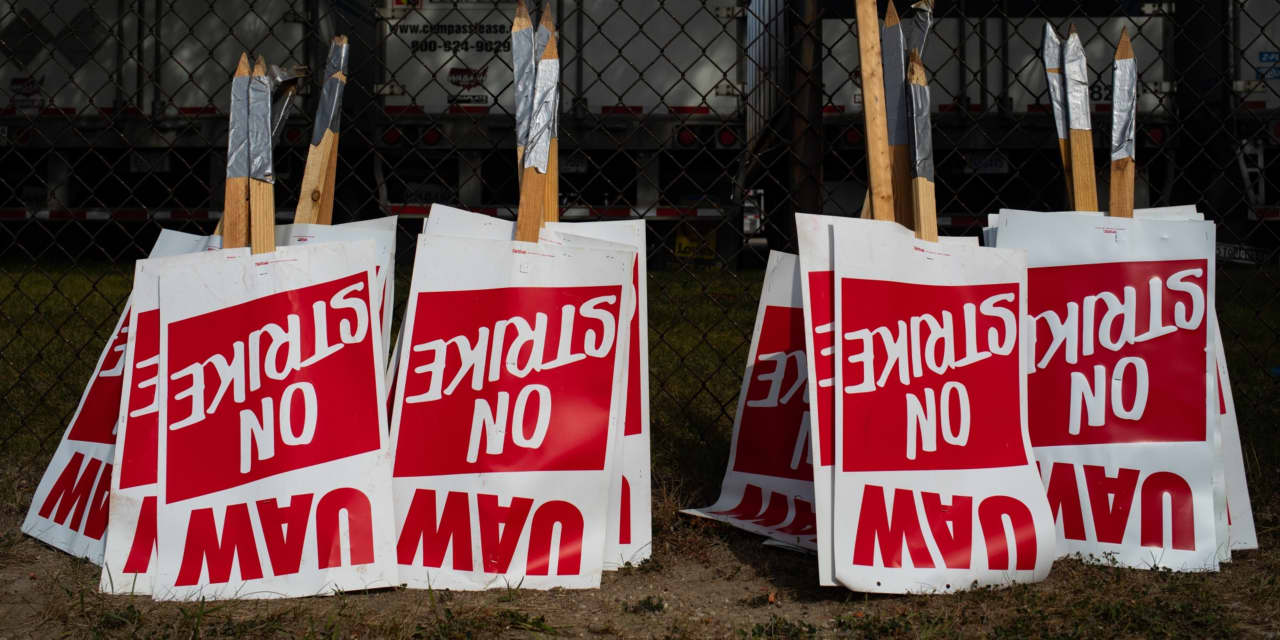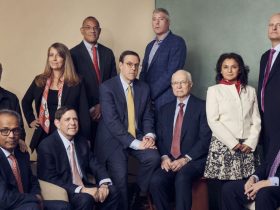“Today is history, tomorrow is Barron’s,” according to our marketing slogan from way back when. That was brought to mind by our Oct. 30 cover story, which exhorted readers to buy bonds instead of crying about them. Due to a confluence of factors, long-term Treasury bonds saw their biggest rally this past week since the headlong plunge in yields in March 2020 in the teeth of the Covid pandemic.
In particular, the benchmark 10-year Treasury yield ended Friday at 4.52%, down sharply from the 5% mark hit a couple of weeks earlier, which translates to higher bond prices. The impact of lower yields rippled through other assets, notably stocks, as the major indexes also enjoyed their biggest weekly gains of the year, ranging from 5.07% for the
Dow Jones Industrial Average
to 6.61% for the
Nasdaq Composite.
The
S&P 500
split the difference with a 5.85% advance.
Thanks are due, in chronological order, to Janet Yellen, as Treasury secretary; Jerome Powell, Federal Reserve chairman; and the Bureau of Labor Statistics. Each in their own way gave indications that the sharp rise in interest rates had peaked, thereby lifting asset prices along the risk spectrum.
The week began with the Treasury outlining its quarterly borrowing plans that, while still massive, contained somewhat fewer longer-term securities than market participants had feared. That set off a massive covering of short positions in Treasury bonds and futures (which involves the purchase of previously sold securities or contracts).
The Federal Open Market Committee’s decision at midweek to hold its key federal-funds target range at 5.25%-5.50%, by contrast, surprised nobody. The panel’s most recent Summary of Economic Projections, released in September, contained a median guess for the year-end fed-funds rate suggesting one more quarter-point hike. But Powell hinted at his news conference on Wednesday that the “efficacy” of those projections “decays” over the three-month spans between SEP updates. Indeed, the fed-funds futures market also sees no further hikes by the central bank.
The employment data released on Friday added to that view, as the labor market showed signs of cooling, suggesting to market bulls no further Fed hikes are likely and there is an expanded scope for cuts in 2024. Nonfarm payrolls increased by 150,000 in October, short of the 180,000 rise estimated by economists, while the two preceding months’ combined tally was revised down by 101,000.
The unemployment rate, derived from a separate survey of households, ticked up by one-tenth of a percentage point, to 3.9%, but for the wrong reason. Unlike in past months, when the jobless rate climbed in part because of more entrants into the labor market, in October the labor force dipped.
Part of last month’s payroll shortfall could be traced to over 30,000 United Auto Workers members added to the number of workers on strike. But the reported generous pay pacts to settle the walkouts imply something other than a weak labor market.
The 4.1% year-over-year October rise in average hourly earnings, down from September’s 4.3% pace, may be headed higher as a result. The Employment Cost Index, a more inclusive measure to Fed policy makers, was up 4.3% from a year earlier in the third quarter, reflecting a tight labor market.
The surges across the bond and stock markets reflect the heightened hopes for the elusive soft landing of the economy, meaning no further interest rate hikes and ultimately cuts in the coming year. But their rallies ironically may be thwarting that possibility.
The Fed justified not raising policy rates in part because of previously tighter financial conditions, notably higher bond yields, a firmer dollar, and lower stock prices. It seems like circular reasoning, but the rebounds in prices of stocks and bonds, plus an easing of the dollar, over the past week may further stave off the long-predicted slowdown.
All of which suggests that, while the Fed may not hike further, hopes for subsequent cuts in 2024 may be premature.
Write to Randall W. Forsyth at randall.forsyth@barrons.com
Read the full article here













Leave a Reply